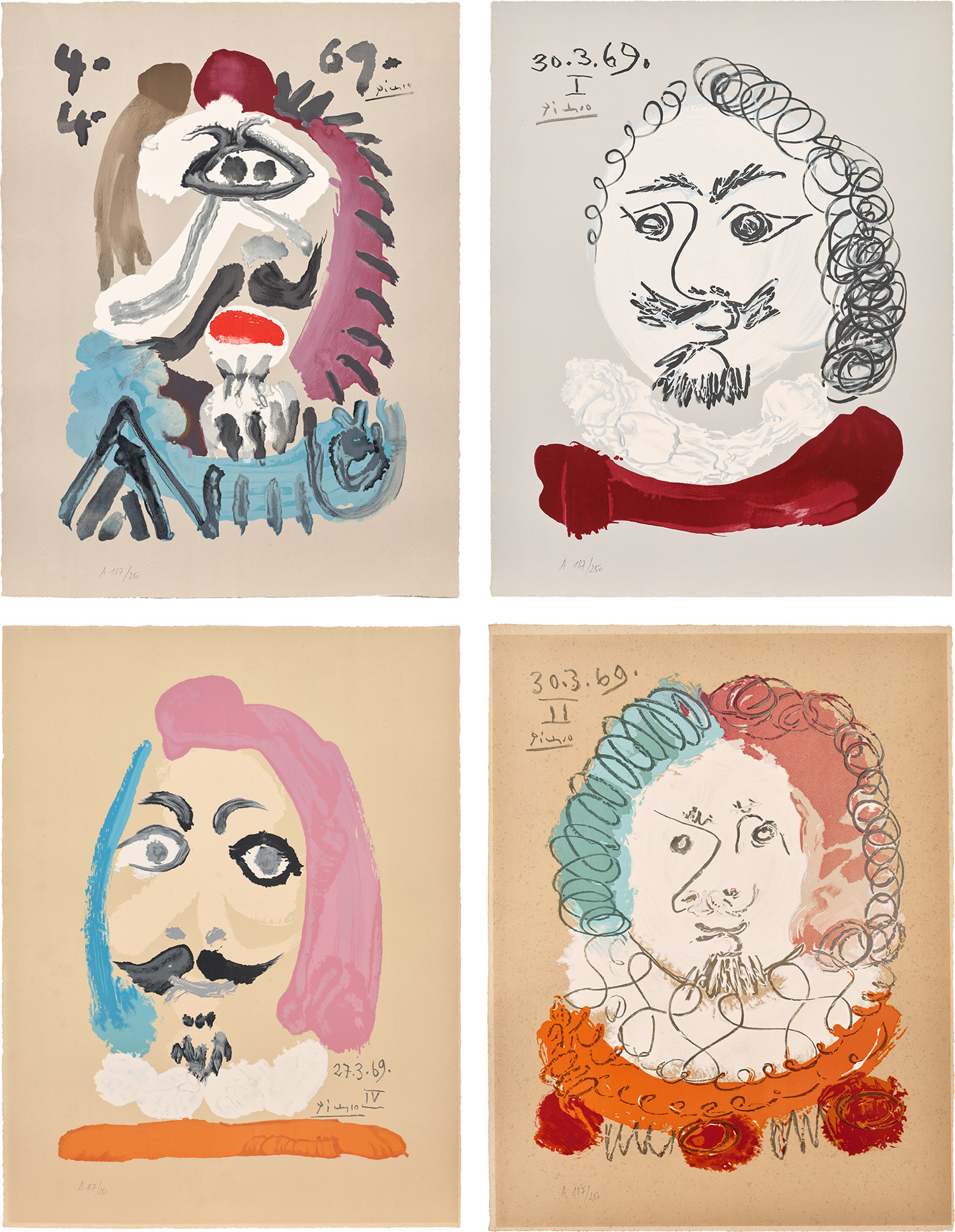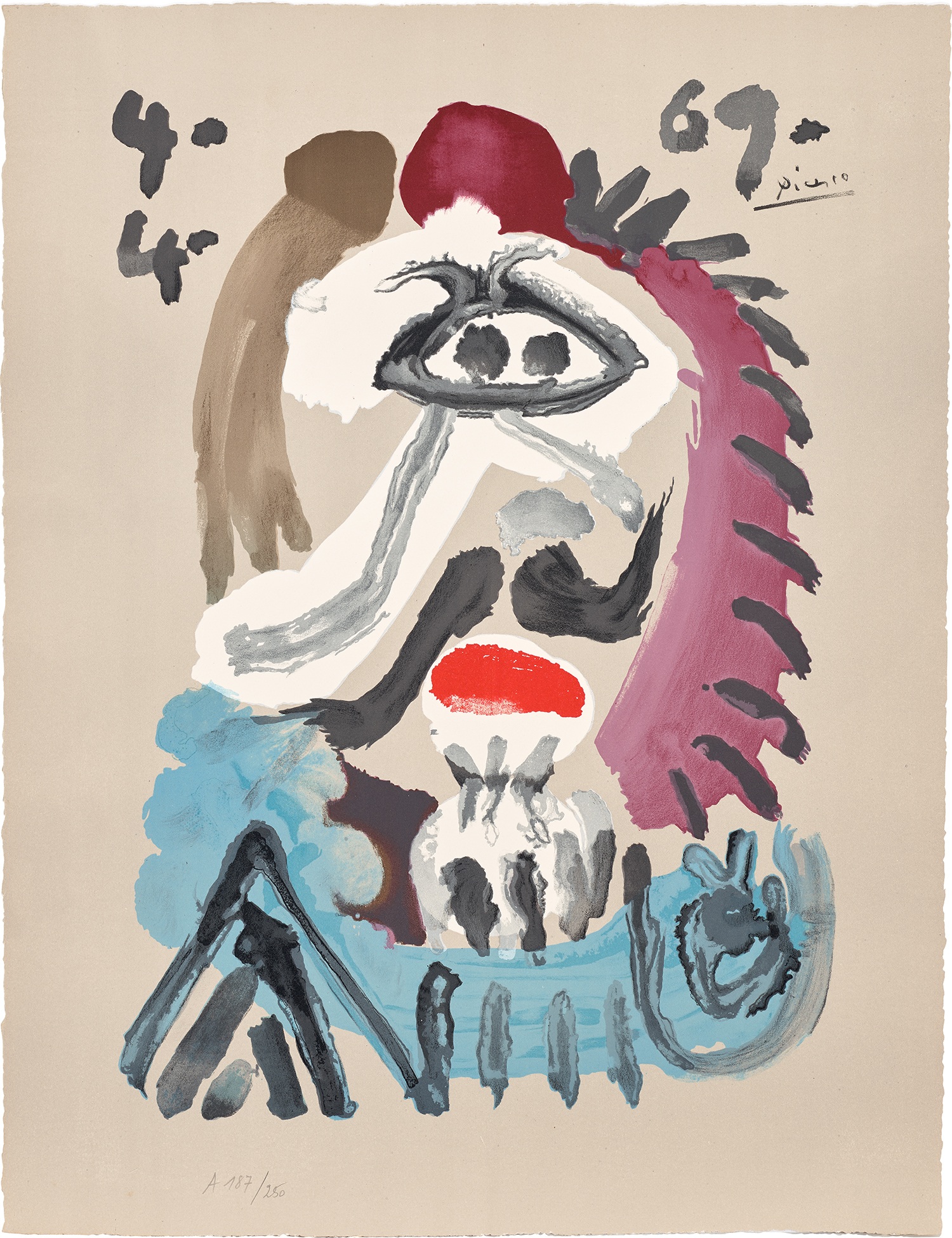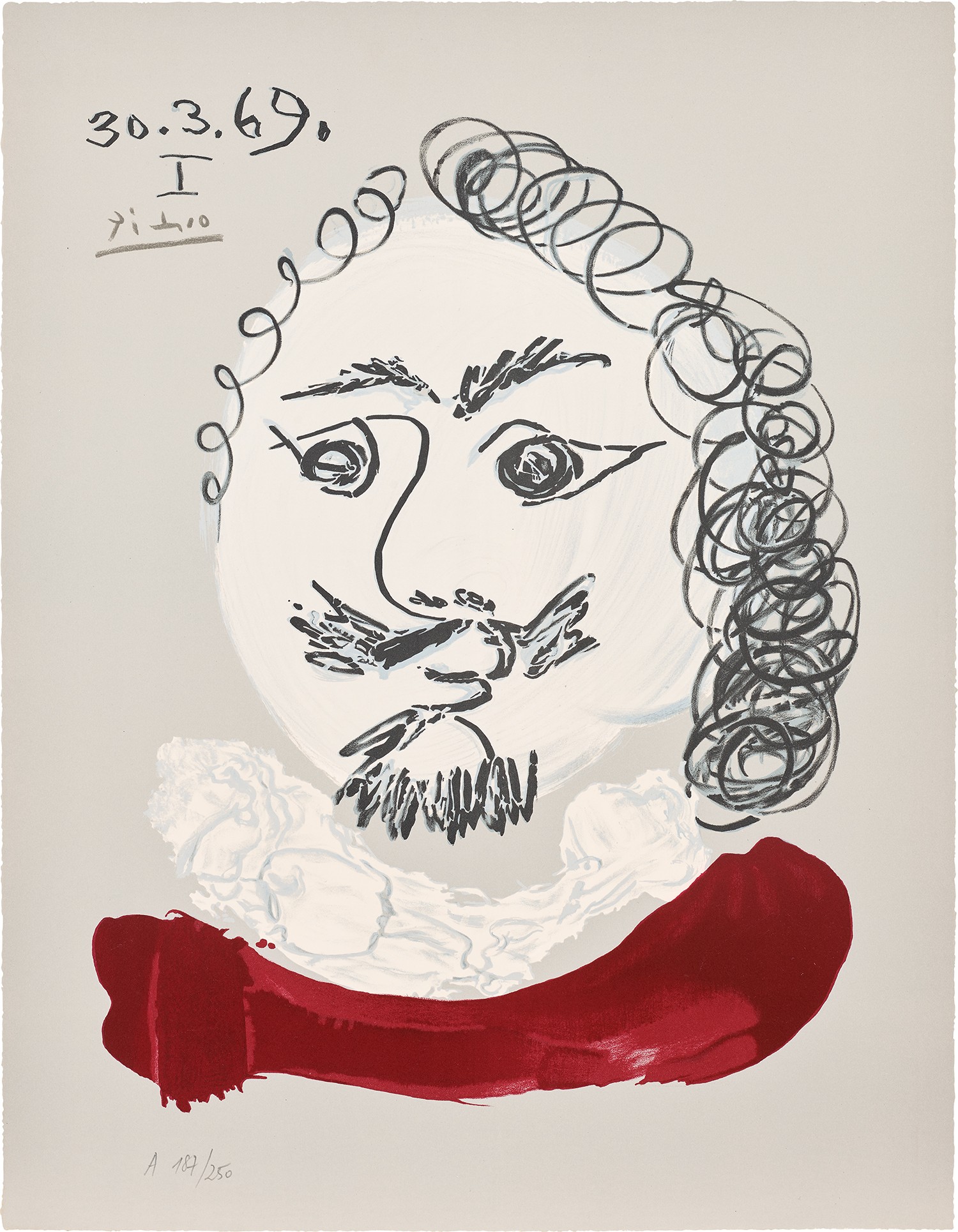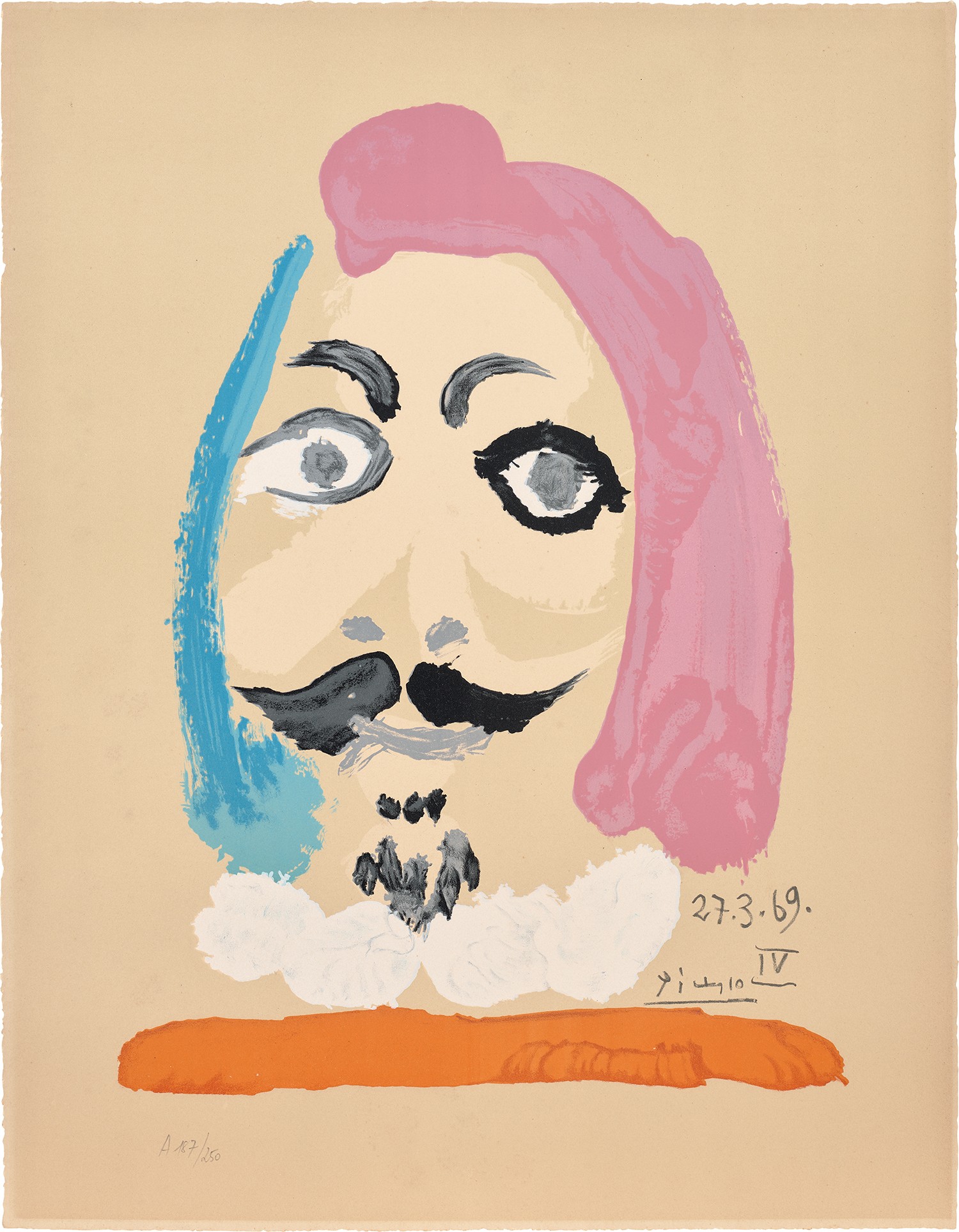









25
After Pablo Picasso
Portraits imaginaire (Imaginary Portraits): four plates
1969
Four offset lithographs in colours, on Arches paper, the full sheets.
all S. approx. 65.5 x 50.2 cm (25 3/4 x 19 3/4 in.)
All numbered 'A 187/250' in pencil, from the American edition (there was also a French edition of 250 marked 'F'), published by Harry N. Abrams, New York, all unframed.